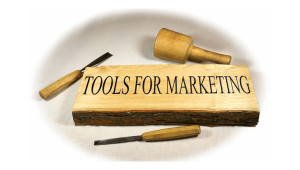Marketing Tools – The digital marketing landscape is exploding with tools promising to improve productivity, automate workflows, and deliver better ROI. From AI-powered platforms to sophisticated analytics dashboards, it’s easy to get overwhelmed by the sheer number of choices. The real challenge? Choosing the right tools that align with your business goals, team dynamics, and budget.
In this crowded market, making the wrong choice in Marketing Tools can mean wasted time, disconnected workflows, and missed opportunities. So how do you cut through the noise?
Here’s a simple framework to help you select the right marketing tools for your team — featuring real-world examples like Liberation Tek Marketing Campaign and HubSpot, and Hootsuite.
1. Start with Your Strategy – Not the Shiny Objects
Before evaluating any tool, revisit your marketing goals. Are you focused on lead generation, customer retention, content creation, or brand awareness? Every tool should tie directly to one or more of your core objectives.
Ask:
-
What’s our biggest bottleneck in marketing right now?
-
What process needs to be automated or improved?
-
Who will be using this tool daily?
Having clear answers helps you evaluate features through a strategic lens instead of being swayed by hype.
2. Assess Your Collaboration Needs

In a world of remote and hybrid teams, seamless communication and collaboration are crucial. That’s where tools like Google workspace and Hub for Teams shine.
Liberation Tek Marketing Campaign and HubSpot is designed to unify project management, marketing collaboration, and communication in one environment. Unlike standalone task trackers, this platform integrates deeply with Microsoft Teams, allowing marketers to:
-
Coordinate campaigns across departments
-
Manage assets and deadlines
-
Track team progress in real time
This level of integration reduces the need to jump between platforms and keeps marketing teams focused and aligned.

3. Look for Flexibility and Integrations Marketing Tools
A great tool doesn’t work in isolation. It should easily connect with your existing ecosystem — CRMs, social schedulers, analytics platforms, etc.
Hub for Teams, for instance, is more than just a chat tool. With its app integrations, Hub for Teams can become the hub for marketing updates, campaign alerts, and even real-time analytics notifications. You can:
- Collaborate instantly on feedback for ad creatives
When your marketing tools talk to each other, your workflows become smoother and smarter.
4. Prioritize User Experience and Onboarding
A tool that’s hard to use won’t get used — it’s that simple. Choose platforms with intuitive interfaces, strong support, and straightforward onboarding. Even the most powerful tool will fail if your team doesn’t adopt it.
Platforms like Marketing Campaign offer guided onboarding and personalized support, which can be especially useful for teams scaling quickly or adopting a more structured marketing approach for the first time.
5. Think Scalability, Not Just Today’s Needs
Marketing teams evolve, and so should your tools. Ensure that whatever platform you choose has the flexibility to grow with your team — whether that means handling more users, more integrations, or more complex workflows.
Both HubSpot and Liberation Tek Marketing Campaign are scalable and offer robust admin controls, making them ideal for startups and enterprise teams alike.

Final Thoughts on Marketing Tools
In today’s rapidly evolving marketing environment, it’s also essential to periodically audit your tool stack. What worked a year ago may no longer serve your current needs. Regularly reviewing performance, team feedback, and feature updates ensures your marketing tools remain aligned with your business goals. Platforms like Liberation Tek Marketing Campaign make this easier by offering customizable dashboards and analytics that help you track how your team is using the tools — and where improvements can be made. In a crowded market, staying agile with your tools isn’t just smart — it’s essential for staying competitive.
Choosing the right marketing tools isn’t about chasing trends — it’s about aligning with your strategy, empowering your team, and streamlining execution.
By focusing on collaboration and unified marketing workspaces, and scalability, you’ll build a tech stack that enhances—not complicates—your marketing efforts.
Remember: the best tool is the one your team actually uses effectively.

